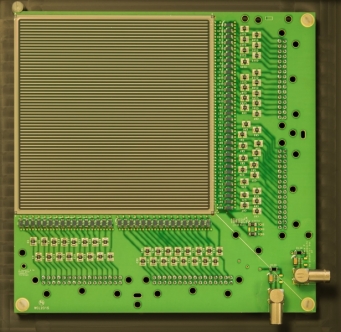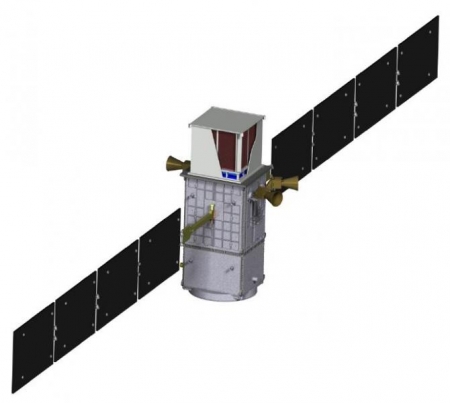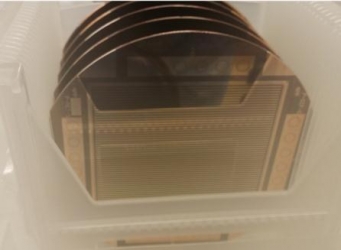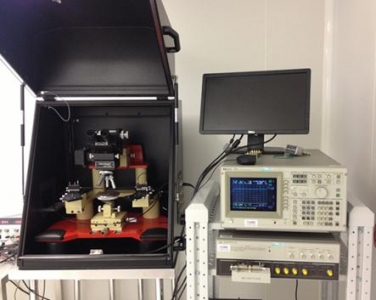The ASTROGAM telescope
The aim of our research and development is to prepare a Compton-type space telescope observing the sky between 100 keV and 100 MeV and reaching a level of sensitivity comparable to those of instruments operating in neighboring fields X and high energy gamma. The scientific objectives of this telescope are very diverse and concern nucleosynthesis, acceleration of cosmic rays, equation of state of dense matter, evolution of supermassive black holes, fundamental physics ... (see more details): http://astromev.in2p3.fr/).
This project, called eASTROGAM, will consist of layers of dual-sided track silicon detectors (DSSD) measuring the particle trajectory, and a scintillating crystal calorimeter. It was submitted to the European Space Agency for its average mission call M4 and was not accepted. He has nonetheless been part of the last 10 projects in competition, and his interest in the community has been clearly demonstrated. So we presented our concept again to the ESA M5 call which is currently being selected (May 2017). In parallel, a test of a prototype of this telescope is also considered during a balloon flight. This project ("COMPOL") was submitted to the CNES balloon call in 2015.
R&T Compton - the COCOTE project
To obtain a Compton high-performance telescope, it will be necessary to accurately measure the point of impact and the energy of each energy deposition of the gamma photon in the system. This requires that each detector is an excellent spectro-imager. Our project is to make a prototype of this telescope with the CSNSM and the IPNO in Orsay, within the framework of the COCOTE project, or we will demonstrate in laboratory the spectral and imaging properties of our system. In a second step, this prototype will be improved for the balloon flight COMPOL, if this is selected by the CNES.
In this project, the APC laboratory is responsible for providing two thick silicon detectors (100x100 mm², thickness 1.5mm), which we have optimized to obtain very good spectral properties (this optimized design of the detectors was realized within the framework of a " A thesis co-financed in 2012-2014). In conjunction with the CEA, we have also optimized the reading system to obtain a spectral resolution of some keV at 60 keV, necessary for our future space telescope. We will also have to demonstrate a spatial resolution, for the localization of the interactions, better than the millimeter. Thanks to the support of the CNES R & T division, the LabEx Univearths and the Paris-Diderot University Space Campus, we commissioned these two detectors, which we received in August 2016. Electrical tests (leakage current, Bulk "and" interstrip ") that we have performed have demonstrated that these detectors conform to the specifications obtained by simulations.


The test benches
We now have to fine-tune our detectors before mounting them in the COCOTE bench. This characterization consisted first of all in measuring the electrical properties of the detector (capacitance, leakage current), and to verify whether they correspond to the values when optimizing the design using Silvaco software. These measurements were made using a tip machine located in the clean room of the laboratory and allowed us to validate our first estimates. Then, another test campaign will be to measure the energy of a known radioactive source, and to make maps of the location performance of these detectors. To do this, we will use collimated radioactive sources that will illuminate our detector in the bench currently being realized.
Left: Bench of electrical characterization of detectors Silicon mounted in the clean room of the laboratory. Right: Test bench for thick silicon detectors, read by the CEF IdefX reading system.
APC scientific team
- Laurent Philippe
- Lebrun François
- Maier Daniel
APC technical team
- Bertoli Walter
- Bréelle Eric
- Oger Ronan




